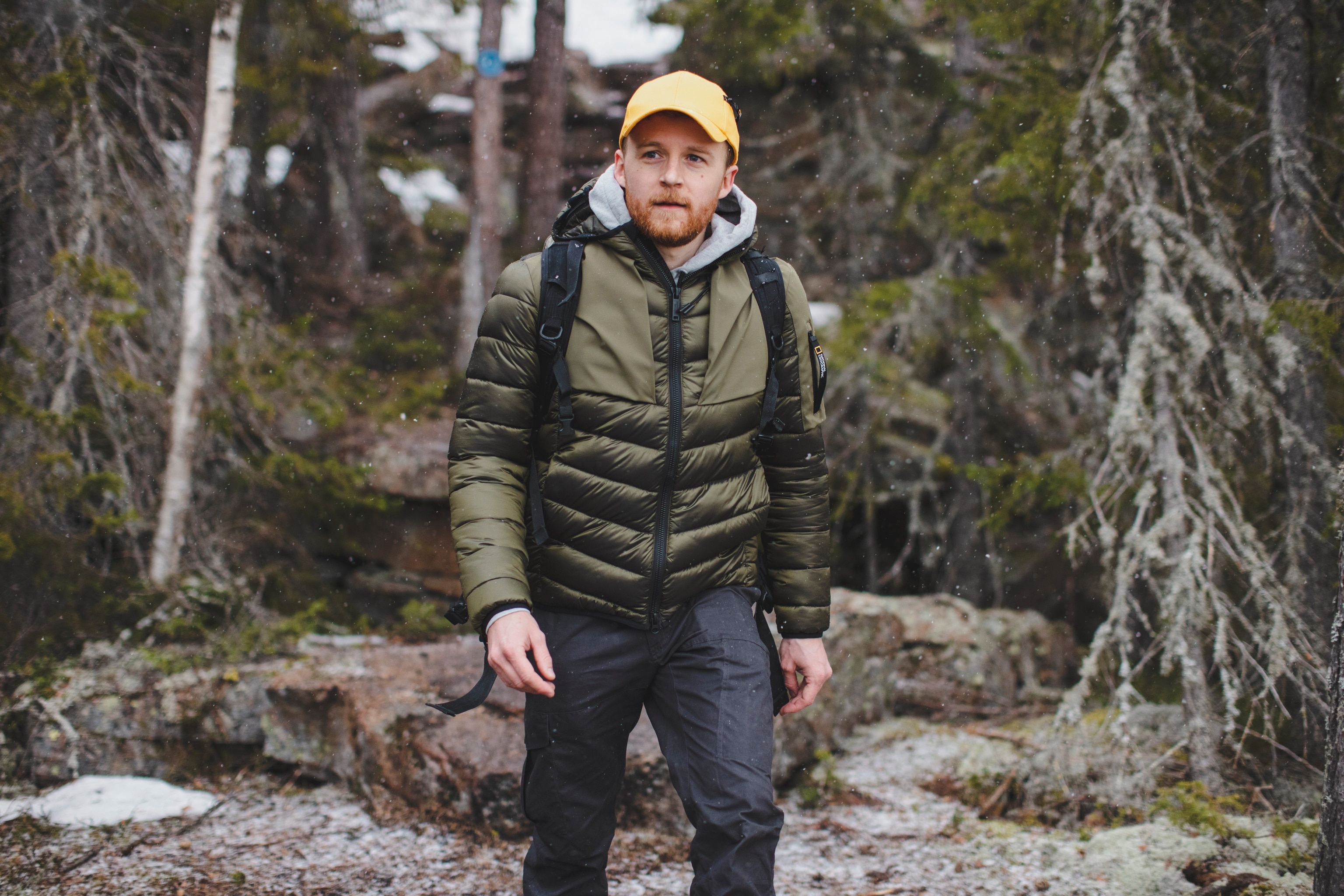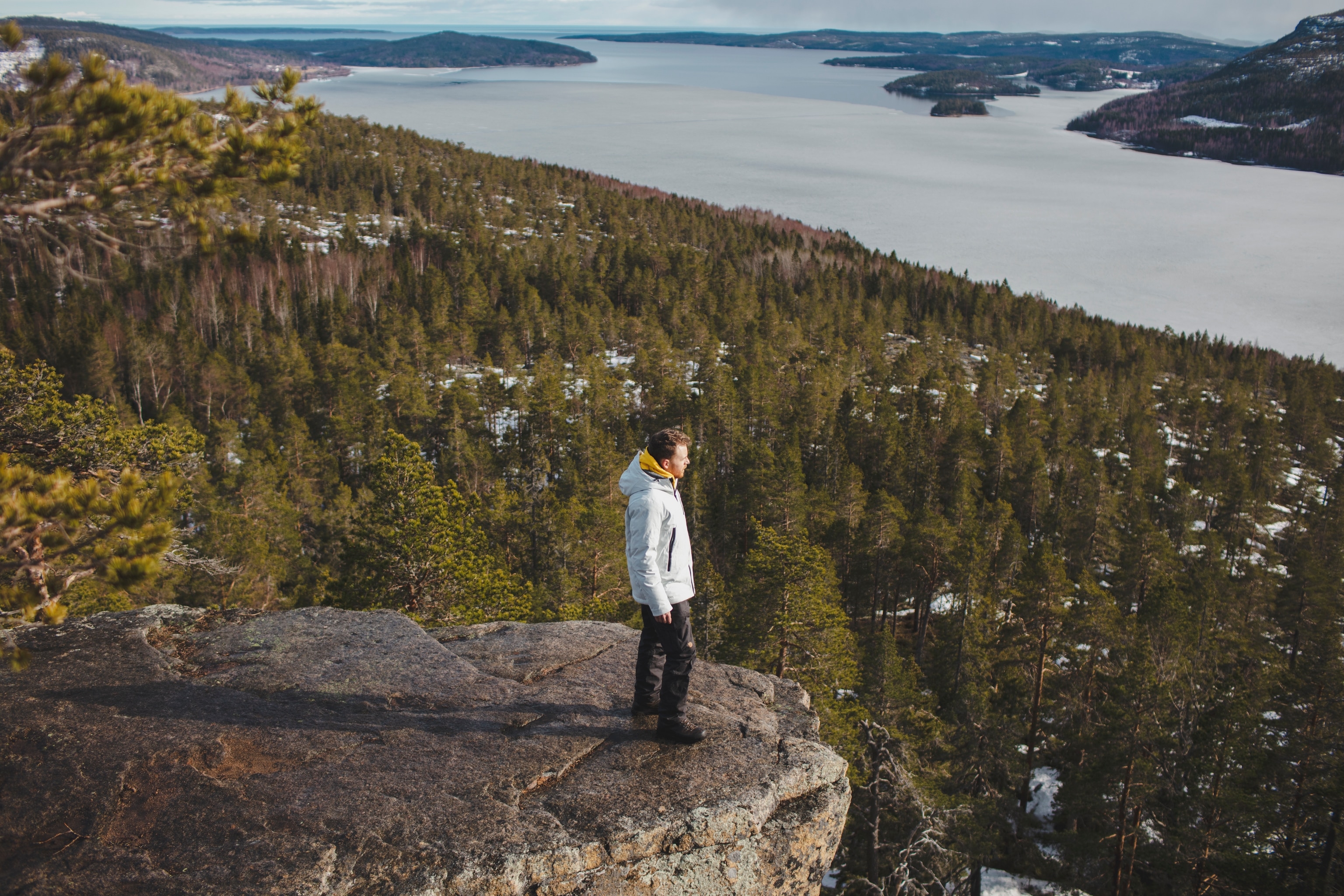Being there: how technology can bring us closer to nature – and help protect it.
Immersive technologies like virtual reality and 360-degree video connect us in new ways with the natural world―while advanced outerwear like the new National Geographic Apparel Collection can reduce our impact on it.
Back in 1990, a man named Ho Khanh stumbled upon the entrance to a cave deep within what is now Phong Nha-Ke Bang National Park in central Vietnam. Eighteen years later, Khanh managed to lead a research team that included scientists from Hanoi University of Science and members of the British Cave Research Association (BCRA) back to the cave―which proved to be enormous. In fact, Hang Son Doong is now believed to be the largest known cave on the planet.
(Being there: how technology can bring us closer to nature – and help protect it.)
When National Geographic Explorer and photojournalist Martin Edström learned about Hang Son Doong, he realized the cave’s vast chambers―many as large as a city block―would be a perfect showcase for the immersive 360-degree and virtual reality technologies he was using. And while he loves heading to remote places, he doesn’t regard this part of his work as “exploration.”

“I find that going to these remote and challenging places brings out the best in me creatively,” he says. But while he loves heading to distant places, his real passion lies in exploring new ways to bring back stories and visuals.
Edström traveled to Phong Nha-Ke Bang with a small team in 2015, trekking deep into the jungle to reach the remote entrance to the cave. There, they used robotic camera heads and a single DSLR and several smaller camera rigs to build immersive, 360-degree environments that viewers could “inhabit” via virtual reality (VR) headsets or, more simply, via sites and applications that employ 360-degree video software. This technology was beginning to go mainstream, with Facebook launching their 360-video service in 2015.

The media that Edström and his team created allows people to have an intimate―albeit digital―experience of a natural wonder that few will ever witness firsthand.
“The joy of this is really that I get to step out of these restrictions of the frame. I can put people inside the experience,” Edström explains. “They get to see what I see.”
Inspiring wonder of the natural world can also help catalyze positive action. The discovery of Hang Son Doong prompted inevitable interest from investors looking to capitalize on the site’s heritage profile, including one company that proposed running a cable car through a section of the cave. By drawing international attention to the cave, Edström’s 360-degree interactive videos may have played a part in ensuring its preservation: for now, just one tour operator is licensed by the Vietnam government to conduct expeditions to Hang Son Doong, and these are limited to four days. For Edström, this is exactly the kind of outcome he’s looking for.
“Almost all of my work plays into conservation somehow,” he says. “Most of my stories are actually about these fragile corners and situations around the world where there is an urgency to act―to save something―before it’s too late.”
Edström’s work has taken him and his team to some remarkable places―from the Yemeni archipelago of Socotra, with its otherworldly landscapes and iconic dragon blood trees, to uncharted caves in Kyrgyzstan, Central Asia. And given the remoteness of many of these locations, having gear the team can rely on is a must. “When I go on assignment, innovation is a big part of my work, and I expect the same from my gear,” says Edström. “Knowing that I’m wearing gear that performs, but is also sustainable, is really important to me.”
These concerns made Edström an ideal candidate to put some items from the new National Geographic Apparel Collection through their paces on a short assignment to Sweden’s High Coast region on the edge of the Baltic Sea. The new line has been designed for the city and the great outdoors―constructed with exploration and sustainability in mind.
Synthetic polyester and polyamide materials can be great for dealing with the elements, offering lightweight breathable layers, good insulation, and water resistance, but typically, these materials are byproducts of the petroleum industry. National Geographic Apparel uses a new generation of recycled and bio-based synthetics that are gentler on the environment. There’s even a bio-based bomber jacket in which every element―from the fabric to the padding to the zippers―will biodegrade within just five years of disposal (polyesters and polyamides typically hang around in the environment for many decades).
The National Geographic Apparel Collection’s ethical and environmental credentials are in line with the Wyss Campaign for Nature, and the National Geographic Society has joined other partners across the globe in this effort that aims to conserve 30 percent of the planet in its natural state by 2030.

Technology has helped Edström to connect audiences with nature and the causes he cares about. “If you want someone to care for something, you first have to make them feel it,” he says. “That’s why working with these immersive techniques is so powerful―I have this new tool at my disposal to bring people into the story.”
At the same time, technological advances in garment manufacture―often driven by consumer demand for more ethical, environmentally friendly products―are bringing more sustainable products to market. Which means that we can all play a small part in conserving nature―simply by making conscientious decisions about the clothing we choose to buy.
Discover the new National Geographic Apparel Collection: adventure-ready clothing with sustainability at its core.
Visit thecorem.com/nationalgeographic to shop the collection.
